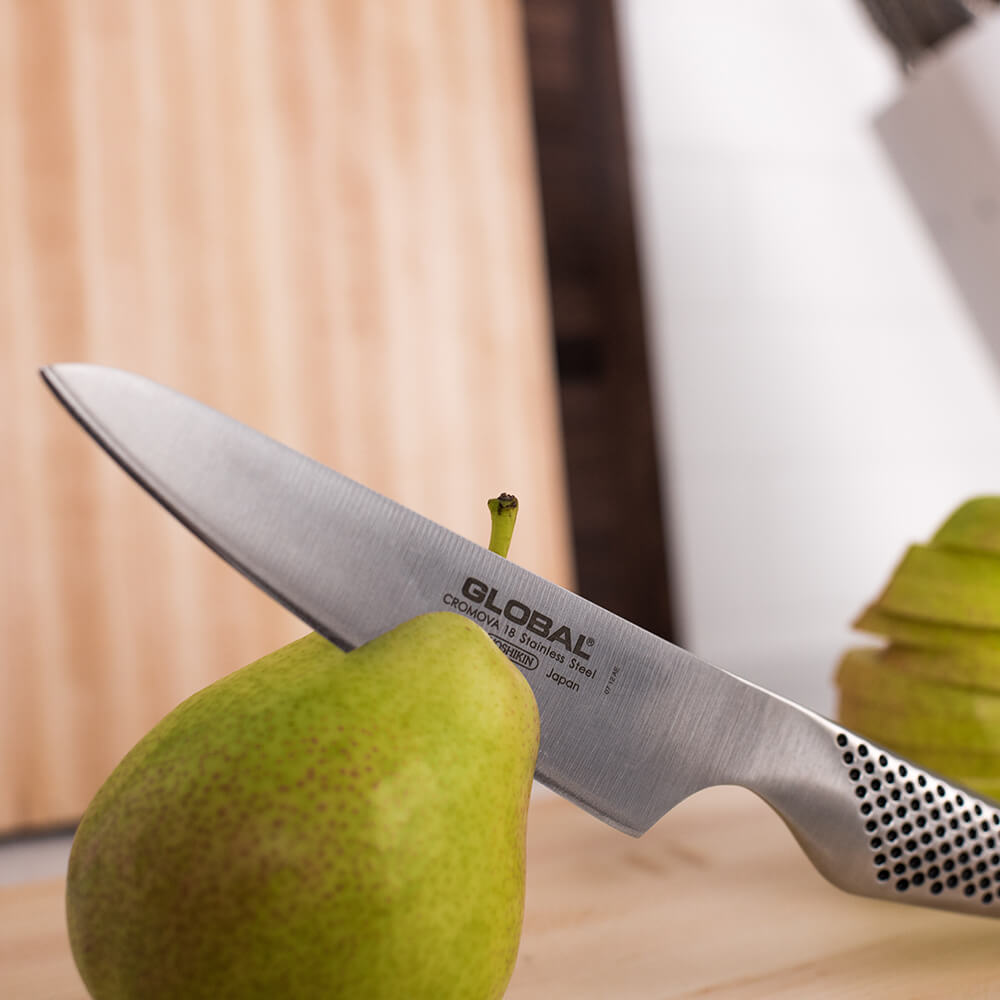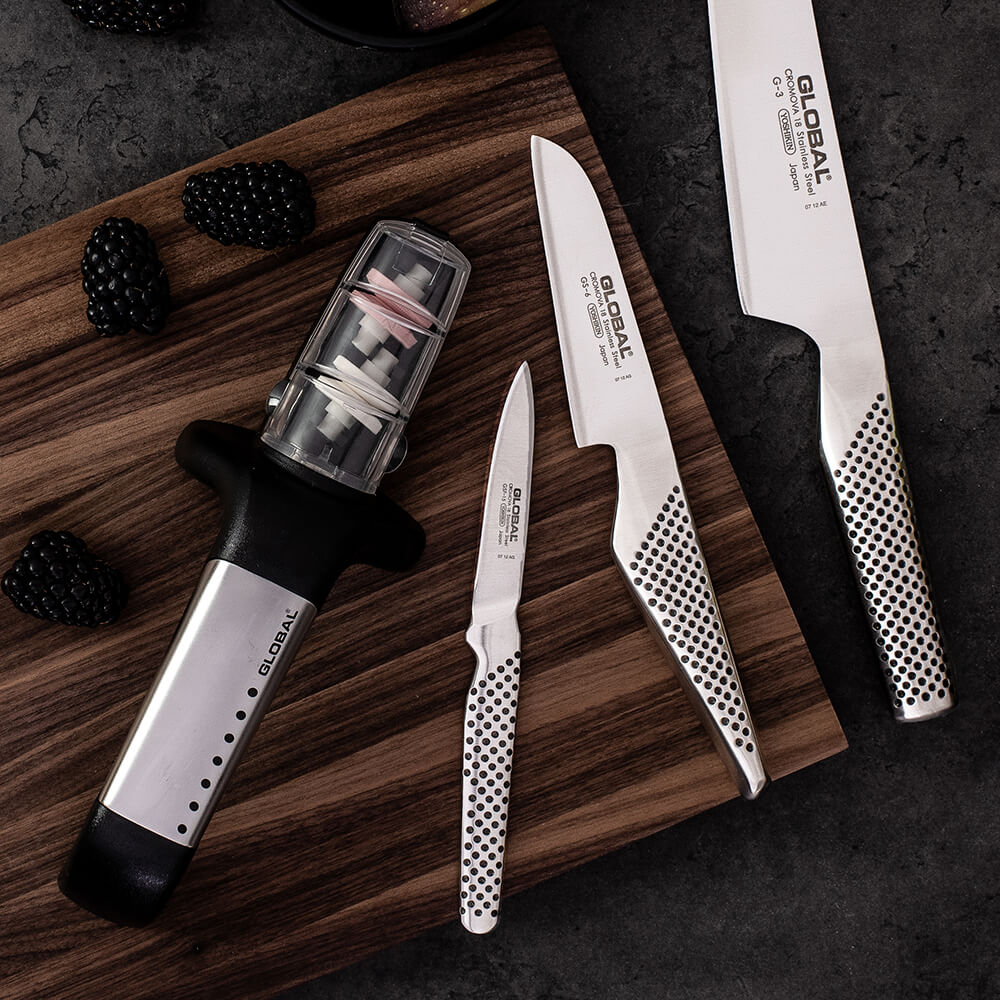GENERAL
Can I visit your store?
We are an online-only store.
How do I use a discount code?
If a promotional discount code is available, insert the coupon code at the checkout page to redeem. Only one code can be applied to your order.
Do you ship internationally?
Yes we ship internationally.
Multiple courier options will be presented at checkout with approximate delivery estimates attached to each. Delivery fee will vary accordingly depending on the weight of your order and delivery address.
I ordered the wrong item/s, how do I fix this?
If you would like to simply change the item/s in your orde before it has been despatched, email us at support@houseofknives.com.au and we are happy to make any adjustments.
DELIVERY & RETURNS
When will my items despatch?
Your order should despatch within 1-2 business days, and you will receive a tracking number via email as soon as it leaves our warehouse.
What is the delivery fee?
Australia:
Standard Delivery via Australia Post will be...
FREE for orders $99+ / $9.95 for orders $30-$99 / $12.95 for orders under $30
Outside of Australia:
Multiple courier options will be presented at checkout with approximate delivery estimates attached to each. Delivery fee will vary accordingly depending on the weight of your order and delivery address.
How long will it take for my items to arrive?
Australia:
Estimated delivery times within Australia are approximately 2 to 12 working days for standard rate of delivery.
Outside of Australia:
An approximate delivery time will show at Checkout dependant on your delivery address and the courier of your choice.
Same Day Delivery (GoPeople) - Sydney only
For customers in the Sydney metropolitan area we offer Same Day Delivery (GoPeople) for orders placed by 11am on a business day.
The cost for same day delivery service is a flat $14.95 fee.
GoPeople is Australia’s smartest same-day delivery solution, offering Senders and Recipients live GPS tracking, showing drop-off and pick-up status, and the locations of the drivers.
Intuitive Proof of Delivery captures recipients signature, or, if authorised to leave, a photo to show where and how the delivery was completed - all shared in real time on the tracking page.
To view the list of postcodes that qualify for Same Day Delivery, click here.
EXPRESS AUSTRALIA POST
Need it faster? We offer Express Post Australia wide with Australia Post. The express delivery charge is dependent on the total weight of your order and the price will appear at checkout once you enter your shipping address details.
Express delivery usually takes up to 1-4 business days for the majority of metropolitan locations across Australia.
If I'm not happy with my item/s, can I return them?
All purchases in our store come with a guaranteed 90-day full refund money-back from the date of purchase.
To be eligible for a return, your item must be unused and in the same condition that you received it. It must also be in the original packaging.
To complete your return, please contact us at support@houseofknives.com.au. Please do not send your purchase back to the manufacturer. Your refund will be processed and a credit will automatically be applied to your credit card or original method of payment within a certain amount of days.
My item/s arrived faulty, what can I do?
House of Knives will replace any good/s that arrive at their destination faulty or damaged when shipping insurance is purchased with their order. Ideally a claim should be made within 48 hours from the parcel being delivered. To confirm the damage we require photographic evidence. Once received, we will arrange for a replacement to be sent out free of charge.
In most cases, we will not require the damaged item returned to us, however, we do request that you keep the damaged item until we can confirm that we do not require it to be returned. If we do require the damaged item to be returned, this will be via Australia Post (standard shipping), and we will cover the cost of its return. Customers are not charged for returning a damaged item to us.
Note: only the return shipping delivery is covered by us. You may reuse the packaging that you received to send it back. If packaging is purchased by the customer to return the items, this will not be covered.
To notify us of the damage please email us at support@houseofknives.com.au.
Please note that if you do not advise us of anything that may be wrong with your order (including missing or damaged products) within 48 hours from its delivery, we are unable to assist you further under any circumstance.
Shipping Insurance
When you place your order, you will be given the option to include shipping insurance.
By purchasing shipping insurance, your order will be covered from Damage, Loss or Theft.
Shipping insurance is calculated as 1% of the total purchase value of the item/s in your cart (minimum $1.00).
If you opt out of shipping insurance for your order, we are not liable for any damage, loss or theft.
Important:
Shipping Protection does not apply to the following below.
If your order falls under one of the categories below. please deselect Shipping Protection before proceeding to Checkout as it does not apply to your order.
If you accidentally add Shipping Protection to your order where it does not apply, please contact us at support@houseofknives.com.au and we will process a refund for this accordingly.























































